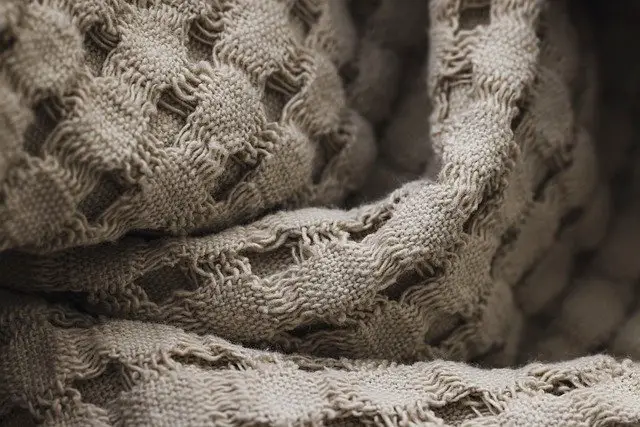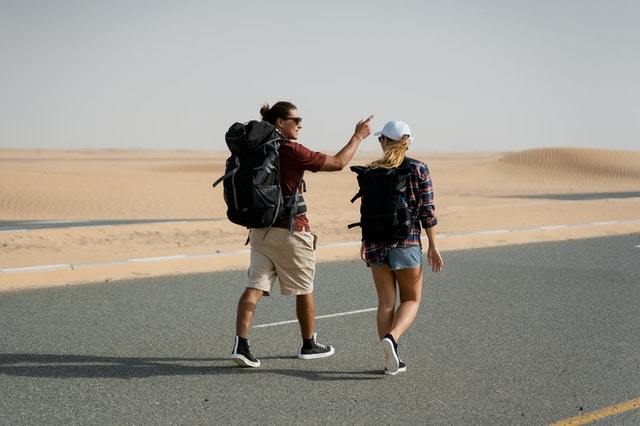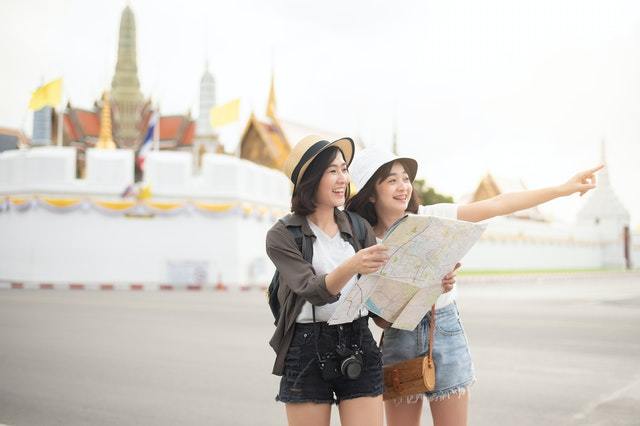What To Wear Backpacking (Guide For All Seasons & Climates)
More and more people have developed a love for outdoor adventuring, but no matter how great that love is, the adventure can be ruined if you fail to wear the proper attire. Whether you’re backpacking for a matter of hours, days, or weeks, it’s important to know what to wear, as well as what NOT to wear.
In this complete guide on what to wear backpacking, we’ll cover the ins and outs of proper backpacking attire based on activity, location, safety, and more.
What To Look For In Backpacking Clothes
Regardless of what you plan on doing while you backpack - hiking, trekking, camping, etc. - there are a few important things to consider when selecting your outfits. No, we’re not talking about choosing the most fashionable pair of hiking boots or the prettiest fishing backpack.
Instead, make sure you’re thinking about these 4 factors when deciding on what to wear while backpacking:
Functionality
The functionality of your backpacking clothes goes hand in hand with the activities you plan to partake in. For instance, you wouldn’t wear the same outfit when hiking in a desert as you would when hiking in a rainforest.
In order to choose clothes that function well based on your planned activities, you want to think about temperature, moisture (rain/snow), how strenuous the backpacking activity will be, and the necessary gear.
If you need easy access to gear like backpacking knives, flashlights, rope, or carabiners, then you’ll definitely want to go with clothes that have accessible pockets and compartments.
Weight Vs Comfort
While heavier clothes add extra layers of protection and extreme durability, they’re also, well, heavy. On the other hand, lightweight clothes are comfortable, but they’re not always the most protective, not to mention durable.
This is where the debate on weight vs comfort comes into play. Depending on what you're doing, how long you're doing it for, and where you'll be doing it, it's important to weigh the pros and cons of heavy and durable vs lightweight and comfortable.
Durability
Speaking of durability, this is definitely something to think about when looking for the proper clothes for your next backpacking outing. Chances are, you’ll be experiencing a lot more - rain, wind, snow, heat, cold, trees, rocks, mountains, hills, rivers, etc. than you would if you were just sitting on the couch at home.
For that reason, you’ll want to choose clothing that can hold up against these elements and has the longevity to last you for many backpacking trips down the road.
Safety
Although it’s the last consideration on this list, safety is actually the most important thing to think about with your backpacking clothing. Is it safe to wear those 6-inch heels on your mountain-climbing adventure? Definitely not.
Not only should you be thinking about what clothes and shoes are best for keeping you safe while you’re up against the great outdoors, but also consider any necessary accessories and additional outerwear. This includes things like:

Basic Clothing Fabrics For Backpackers
In addition to functionality, comfort, durability, and safety, fabric is another important thing to think about. Here’s a quick breakdown of which fabrics are recommended for backpacking (as well as one that is not):
Wool
Wool has never been considered a comfortable fabric. In fact, many people avoid wool at all costs due to its itchy, scratchy nature. But wool is actually an excellent choice for backpacking.
Certain types of wool (like ultra-fine merino wool) are itch-free, and they’re designed to be breathable, moisture-wicking, fast-drying, and durable. This type of wool is best for your base layers of clothing, like socks and tees.

Polyester/Nylon
Synthetic fabric blends with polyester and nylon are not only quick-drying but also durable. These materials are great for shirts and pants, but some people avoid them because they tend to hold onto odors more than other fabrics.
Silk
Silk may not seem like a backpacking-friendly fabric, but it’s actually great for cool-weather activities. It also feels nice against the skin without adding additional bulk, so it's an excellent choice for your base layers. If you are backpacking in cold weather, though, just make sure to bundle up with additional layers on top.
Cotton
Cotton is not an ideal choice for backpacking. In fact, many hikers and backpackers say that “cotton kills” because it doesn’t insulate and it has poor moisture-wicking abilities. If you do choose to wear cotton, it’s best to wear a wool or synthetic fabric underneath it.
What To Wear Backpacking (Outfit Ideas For All Seasons)
Backpacking may not seem like a year-round activity, but some people are completely fine embarking on an outdoor adventure in any weather or temperature. Whether it’s rain, shine, summer, or winter, considering the season should definitely play a part in your outfit decision.
Unfortunately, there's no official list of clothing items on what to wear backpacking in summer or what to wear backpacking in fall (or winter and spring, for that matter). That's because the season's temperatures and weather trends depend entirely on where you are in the world.
For instance, summertime in some destinations is hot and dry, while other locations might have a summer season filled with rain and cooler temperatures. All we can tell you is to check the forecast for when and where you plan to backpack before deciding what to wear.

Clothing Recommendations Based On Category
What NOT To Wear Backpacking
Now that you know what to look for in your backpacking outfits, let’s cover what to avoid:
Backpacking In Different Countries (What To Wear - Outfit Ideas)
One of the beauties of backpacking is that it can pretty much be done anywhere. No matter which country or continent you’re in, chances are, there’s somewhere really cool for backpacking nearby.
Heck, some people even travel to different continents just to backpack. Europe and Asia are prime backpacking destinations, all thanks to their natural beauty, good weather, and cool landmarks.
Before you book a flight, though, here are a few tips to keep in mind for each major backpacking destination:
Backpacking In Europe
Your decision on what to wear backpacking in Europe comes down to the destination. Europe is a big place - almost 4 million square miles - so the weather and backpacking conditions can vary greatly depending on where you are.
Let’s say you want to backpack through Western Europe to check out Italy, Germany, Spain, France, etc. If you don’t mind scorching heat with your constant sunshine, then visiting between June and August is best.
If you prefer things to cool down and want to avoid massive crowds, consider traveling in one of the shoulder months, like May or September. Just be sure to pack your clothes accordingly!
Backpacking In Asia/Southeast Asia
Asia is one of the best destinations for backpacking. It’s cheap, cultural, beautiful, and downright AMAZING. Similar to Europe, Asia is a big place, so what you wear and when you go depends on your preferred destinations.
Let’s say you want to plan a trip to Thailand (one of the most backpacked countries in the world). Many sources say that the best time to visit is between the months of November and February when there's very little rainfall, and the temperatures are cool. Rain is relatively common in Thailand, though, so no matter when you visit, packing a rain jacket and waterproof gear is a must.

People Also Ask (FAQs)
Should you wear jeans backpacking?
No! Denim is not a good choice of fabric for backpacking. It’s bulky, heavy, and holds on to moisture. If it rains, or even if you simply sweat, you could face the risk of chafing from your wet jeans.
Can I wear sweatpants for hiking?
Technically, yes, but avoid sweatpants that are overly loose or made from cotton. The best are made from quick-drying materials, are tightly fitted, and are closed at the button (like joggers).
Do I really need hiking socks?
Absolutely. Failing to wear socks can have a lot of negative repercussions, like chafing and blisters. That being said, you can technically wear socks that aren’t made just for hiking; just make sure that they’re not made from cotton.
Do I need ankle support for hiking?
A lot of people prefer hiking boots for the added ankle support, but if you prefer trail runners (which are more like running shoes), that’s completely fine. However, if you’ve experienced ankle problems in the past, it’s best to wear shoes with extra support.
How many layers should you wear hiking?
It depends on the climate and temperatures. But when in doubt, it’s always best to plan your outfits in layers. If you get hot, it’s always possible to take off a layer or two, but if you get cold, you have to rely on what you’re currently wearing.
Conclusion
Now that you know what to wear for backpacking adventures, you can backpack more comfortably, and most importantly, safely. Remember to first and foremost think about your clothes’ functionality, safety features, comfort, and durability.
